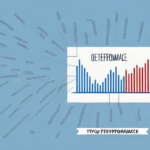Discover the Best Small Business Shipping Solutions with Discounted Rates for FedEx and UPS
Small businesses are the backbone of any economy, playing a vital role in creating jobs, promoting innovation, and driving economic growth. However, to succeed, they must find ways to reduce costs and maximize profits. One significant expense that small businesses face is shipping costs.
In today's globalized market, shipping is essential for business operations. Small businesses often struggle to find the right shipping solution that fits their needs and budget. Shipping can be time-consuming, complicated, and expensive, making it crucial for small businesses to adopt reliable and cost-effective shipping solutions that can save money in the long run.
Why Small Businesses Need a Shipping Solution
Shipping is integral for small businesses to reach their customers, deliver products and services, and handle raw materials and supplies. However, shipping presents challenges such as high costs, delays, lost or damaged packages, and complicated logistics.
Without an effective shipping solution, small businesses risk losing customer trust and damaging their reputation. Customers expect timely, cost-effective, and reliable delivery of their packages. Delayed or damaged shipments can lead to negative feedback, chargebacks, and loss of business.
One significant advantage of having a shipping solution is the ability to track packages in real-time, keeping customers informed about their shipment status and building trust and loyalty. Moreover, shipping solutions often provide access to discounted shipping rates, reducing costs and increasing profitability.
Additionally, effective shipping solutions help streamline the shipping process. With the right tools and technology, small businesses can automate many aspects of shipping, such as label printing, package tracking, and order fulfillment. This automation saves time, reduces errors, and allows businesses to focus on other critical operations.
Factors to Consider When Choosing a Shipping Solution for Small Businesses
Selecting the right shipping solution can be daunting for small businesses. They need to consider their specific needs, budget, and logistics. Key factors to consider include:
- Cost: Look for cost-effective shipping solutions that won't significantly reduce profits.
- Speed: Customers expect prompt delivery. Choose reliable and fast shipping options that meet your delivery timelines.
- Reliability: Ensure the shipping solution offers reliable services with end-to-end tracking and monitoring.
- Customer Service: Opt for shipping solutions with excellent customer support to handle any issues during the shipping process.
Another crucial factor is the variety of shipping options available. Solutions should offer multiple shipping methods, such as express shipping, international shipping, and same-day delivery, to cater to diverse customer needs. Providing a range of shipping options enhances the customer experience, improving satisfaction and loyalty.
Pros and Cons of Using FedEx and UPS for Small Business Shipping
FedEx and UPS are among the most popular shipping companies used by small businesses. Here's an analysis of their advantages and disadvantages:
Pros of Using FedEx and UPS
- Reliability: Both FedEx and UPS are renowned for their reliability, backed by extensive experience in logistics.
- Fast Delivery: They offer numerous fast delivery options suitable for urgent shipments.
- Tracking and Monitoring: Comprehensive tracking systems provide end-to-end visibility of shipments.
- Insurance Options: Both companies offer insurance to protect packages against loss or damage.
Cons of Using FedEx and UPS
- Cost: Their services can be more expensive compared to other shipping solutions in the market.
- Delays: Shipping delays can occur due to weather, traffic, or other factors beyond the company's control.
- Complex Pricing: Their pricing structures can be complicated, making it challenging to estimate shipping costs accurately.
Despite these drawbacks, FedEx and UPS offer robust services that can be advantageous for small businesses. Additional factors to consider include:
- Package Size and Weight: Both companies have weight and size restrictions. Exceeding these limits may require alternative shipping providers.
- Destination: For international shipping, specialized companies with expertise in customs and international regulations may be more suitable.
How to Get Discounted Rates for Shipping as a Small Business Owner
Small businesses can mitigate shipping costs by leveraging discounts offered by shipping companies. Here are strategies to obtain discounted rates from FedEx and UPS:
- Volume Discounts: Shipping larger volumes of packages can qualify small businesses for discounted rates.
- Membership Programs: Both FedEx and UPS offer membership programs that provide access to lower shipping rates.
- Retail Partnerships: Partnering with retail stores such as Staples or Office Depot can provide access to discounted shipping rates.
- Online Discounts: Using online shipping platforms or signing up for online accounts can unlock additional discounts.
Moreover, small business owners can negotiate with shipping providers for better rates by demonstrating consistent shipment volumes and maintaining good payment histories. Conducting thorough research and comparing rates across different shipping companies ensures optimal cost savings for the business.
How to Save Money on Shipping Costs for Your Small Business
Beyond discounts, small businesses can implement several strategies to reduce shipping expenses:
- Use the Right Packaging: Selecting appropriate packaging reduces the risk of damage during transit and may lower shipping costs.
- Negotiate Rates: Engage with shipping companies to negotiate better rates based on shipping volume and frequency.
- Use Flat-rate Boxes: Flat-rate shipping can offer predictable costs and potentially save money, especially for heavier items.
- Consolidate Shipments: Combining multiple shipments to the same destination can reduce overall shipping costs.
- Optimize Shipping Zones: Understanding shipping zones and selecting the most cost-effective options can lead to significant savings.
Additionally, utilizing online shipping platforms allows businesses to compare rates from various carriers and select the most cost-effective option. Some platforms offer exclusive discounts for small businesses, further reducing costs. By adopting these practices, small businesses can efficiently manage shipping expenses and allocate resources to other critical areas of their operations.
Tips for Streamlining Your Small Business Shipping Process
Efficient shipping processes enhance productivity and reduce operational costs. Here are actionable tips for streamlining shipping for small businesses:
- Digitize Your Shipping: Implement digital shipping platforms to simplify processes and enhance accuracy.
- Automate Shipping Labels: Automating label creation to save time and minimize errors.
- Centralize Your Shipping: Centralizing shipping operations can improve efficiency and save time.
- Train Employees: Providing training on shipping procedures reduces errors and boosts productivity.
Additionally, negotiating better shipping rates with carriers by consolidating shipments or leveraging third-party logistics providers can lead to cost savings. Tracking shipments and monitoring delivery times help identify and address any issues promptly, ensuring a smooth and efficient shipping process.
How to Track Your Small Business Shipments with FedEx and UPS
Both FedEx and UPS offer comprehensive tracking and monitoring tools for small businesses to manage their shipments effectively. Business owners can track their shipments by logging into their accounts on the respective websites or using dedicated mobile apps that provide real-time updates and notifications.
Case Studies: Examples of Successful Small Businesses Saving on Shipping Costs
Numerous small businesses have successfully minimized their shipping costs through strategic measures. Here are some real-world examples:
Case Study 1: Farm-to-Table Restaurant
A farm-to-table restaurant sourced fresh produce from multiple farms across different locations. By consolidating shipments, negotiating favorable rates with shipping companies, and optimizing shipping zones, the restaurant saved over $5,000 in shipping costs within a year.
Case Study 2: Online Retailer
An online retailer adopted flat-rate boxes for all shipments and negotiated competitive rates with FedEx and UPS. The business also optimized shipping zones and automated the creation of shipping labels, resulting in savings exceeding $15,000 in shipping costs annually.
Common Mistakes to Avoid When Choosing a Shipping Solution for Your Small Business
Choosing an inappropriate shipping solution can be detrimental to small businesses. Avoid these common mistakes:
- Not Comparing Rates: Failing to compare rates from different shipping providers can lead to higher costs.
- Ignoring Insurance Options: Overlooking insurance can expose businesses to losses from damaged or lost packages.
- Not Considering International Shipping: Ignoring international shipping options limits business growth in global markets.
The Future of Small Business Shipping: Trends to Watch Out For
The shipping industry is rapidly evolving. Small businesses must stay informed about emerging trends to maintain a competitive edge. Key trends include:
- Green Shipping: With growing environmental awareness, businesses are exploring eco-friendly shipping methods to reduce their carbon footprint.
- Automated Shipping: Automation technologies streamline shipping processes, minimize errors, and enhance productivity.
- Same-day Delivery: Increasing customer demand for faster delivery times pushes businesses to adopt same-day delivery services.
Conclusion: Why FedEx and UPS are the Best Shipping Solutions for Your Small Business
Selecting the appropriate shipping solution is critical for small businesses' success. FedEx and UPS provide reliable, fast, and comprehensive tracking services. Although their pricing structures can be complex, small businesses can leverage discounts and cost-saving strategies to lower shipping expenses. By implementing the tips and best practices outlined in this article, small businesses can streamline their shipping processes, save costs, and enhance customer satisfaction.




















